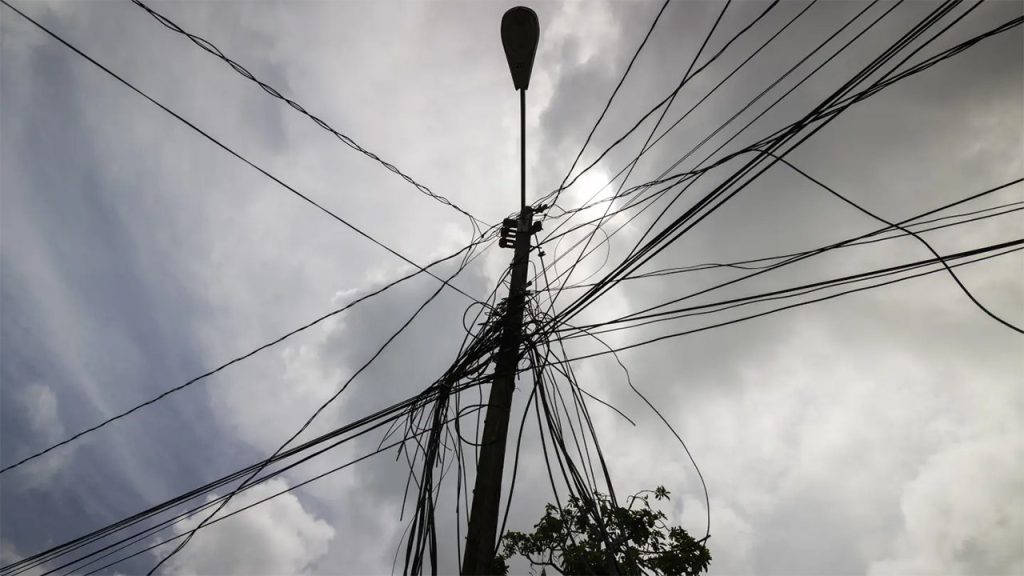Puerto Rico, a U.S. territory, was plunged into darkness on Tuesday, December 31, 2024, mere hours before New Year’s Eve celebrations were set to begin. A massive power outage, affecting nearly 1.3 million customers, silenced the island as electrical appliances and air conditioners shut down, leaving only the hum of generators owned by the more affluent residents. Luma Energy, the private company responsible for electricity transmission and distribution, confirmed the widespread blackout, affecting approximately 90% of its 1.47 million customers. The company attributed the outage to a fault in an underground power line and assured the public that restoration efforts were underway, prioritizing speed and safety.
The blackout ignited existing public frustration with Luma Energy and Genera PR, the company overseeing power generation in Puerto Rico. Governor-elect Jenniffer González Colón, scheduled to take office on January 2, 2025, responded swiftly to the crisis, calling for the appointment of an “energy czar” to investigate potential contractual breaches by Luma while a new operator is sought. She emphasized the urgency of stabilizing the island’s fragile energy grid, declaring it her top priority upon assuming office. Colón’s statement echoed the widespread sentiment that Puerto Rico could no longer rely on a failing energy system.
Current Governor Pedro Pierluisi also addressed the situation, confirming communication with both Luma and Genera PR. He reported that restoration work was underway, focusing on the San Juan and Palo Seco power plants. Pierluisi demanded answers and solutions from both companies, urging them to expedite the restart of generating units unaffected by the fault and to maintain transparent communication with the public regarding restoration efforts. The blackout disrupted daily life across the island, forcing businesses, parks, and malls to close, and prompting the government to implement limited schedules for its agencies.
The White House acknowledged the crisis, stating that President Biden had been briefed on the situation by Homeland Security Advisor Liz Sherwood-Randall. Secretary of Energy Jennifer Granholm contacted Governor Pierluisi, offering federal assistance to expedite power restoration. This high-level attention underscored the severity of the outage and the federal government’s commitment to supporting Puerto Rico’s recovery.
The blackout, while significant, highlighted the long-standing vulnerability of Puerto Rico’s power grid. While such widespread outages are infrequent, the island grapples with chronic power disruptions attributed to a decaying infrastructure severely damaged by Hurricane Maria in 2017. Even before the hurricane, the power grid had suffered from years of neglect and underinvestment. The recent commencement of permanent repairs following Hurricane Maria underscores the protracted recovery process. The island’s continued reliance on FEMA-provided generators further emphasizes the fragility of the system.
The Puerto Rican government’s recent request to extend the use of over a dozen portable generators for an additional two years highlights the ongoing challenges. Adding to the complexity is the Puerto Rico Electric Power Authority’s struggle to restructure over $9 billion in debt, representing the largest debt burden of any government agency on the island. The island’s dependence on petroleum-based power plants, which generate over 60% of its energy, further contributes to its vulnerability. Despite the island’s abundant sunshine, solar energy accounts for a mere 7% of electricity consumption, hampered by a poverty rate exceeding 40%. This combination of factors – aging infrastructure, hurricane damage, financial constraints, and dependence on fossil fuels – creates a precarious energy landscape for Puerto Rico, leaving it susceptible to disruptions like the New Year’s Eve blackout. The incident underscored the urgent need for long-term solutions to ensure a reliable and sustainable energy future for the island.

